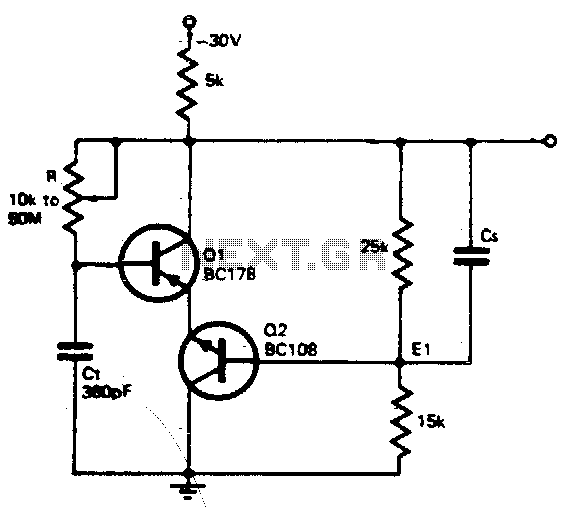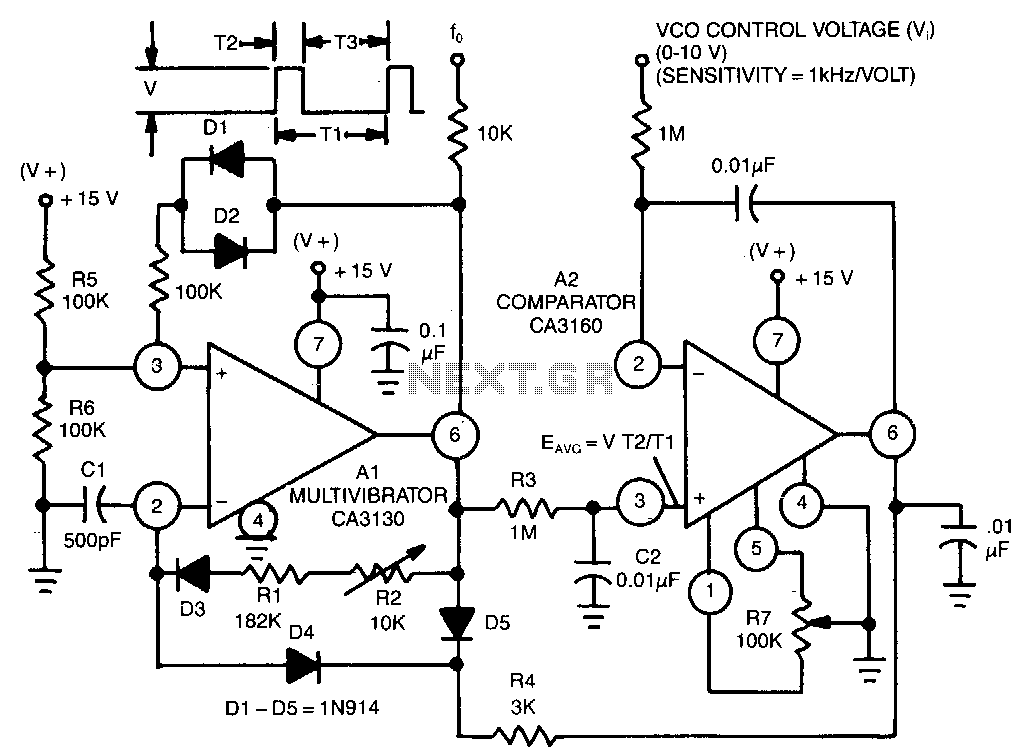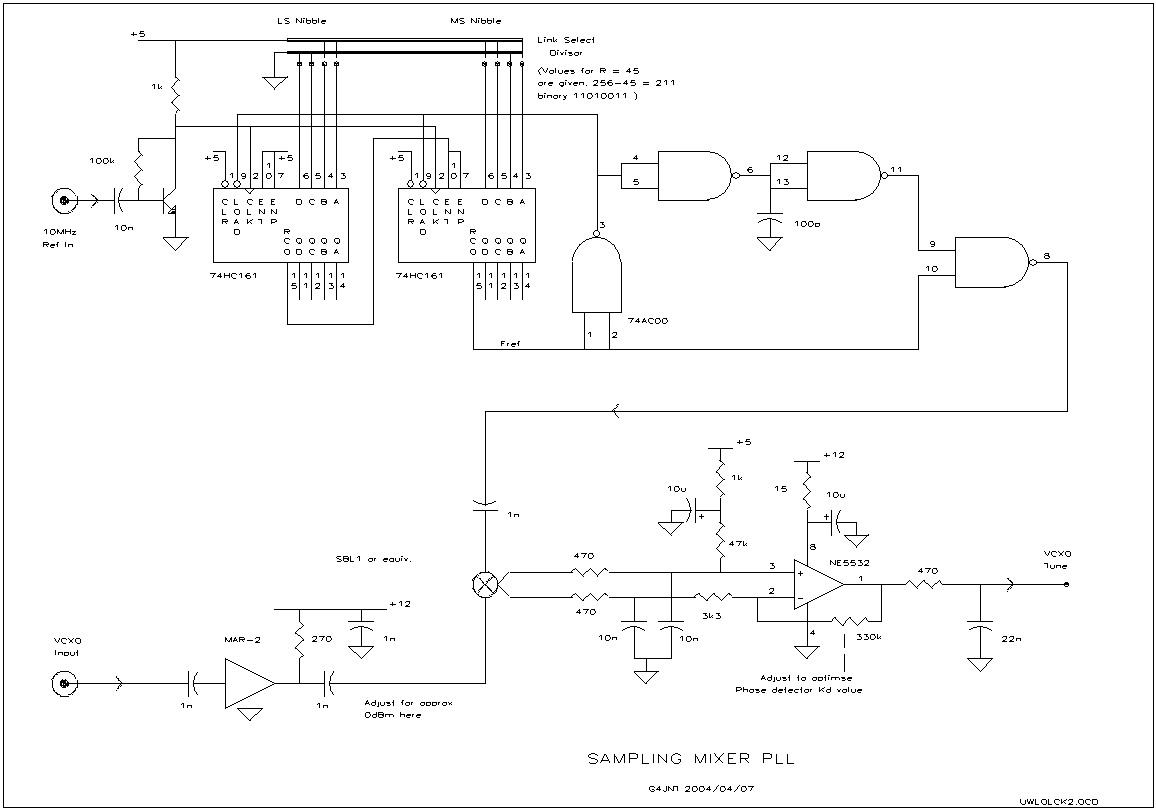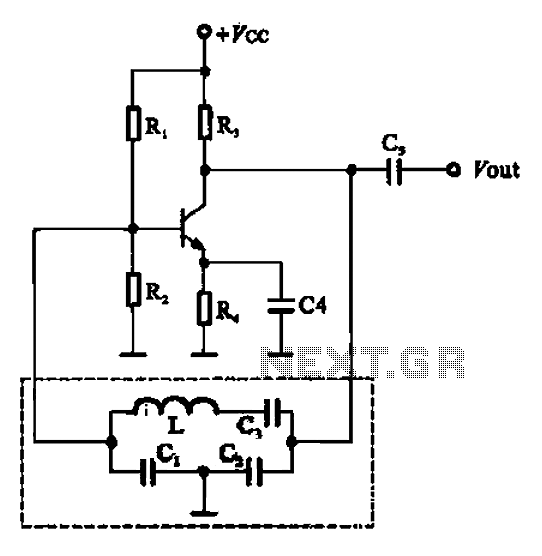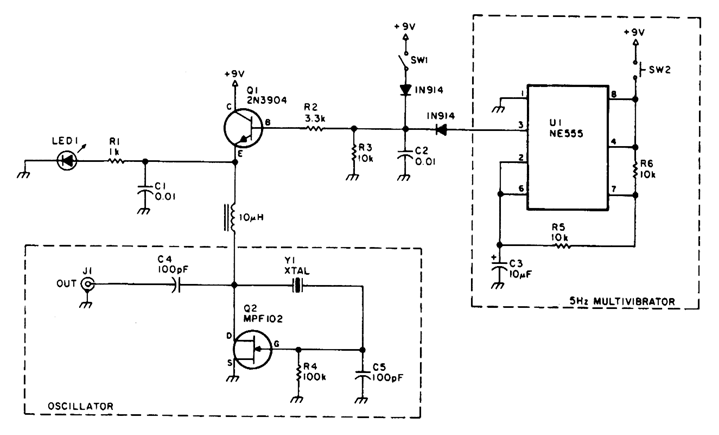
Sawtooth and Squarewave Oscillator
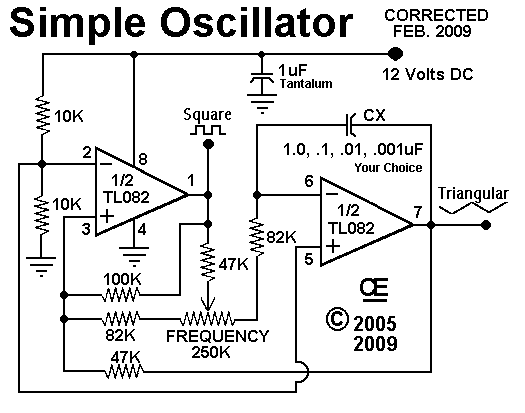
The control on the PCB is set at specific positions with the following capacitance values and their corresponding measured frequencies: For a capacitance of 100 pF, the frequencies are 6 kHz, 12.05 kHz, and 26 kHz. For 470 pF, the frequencies are 1.525 kHz, 3.2 kHz, and 7.232 kHz. For 0.01 µF, the frequencies are 681 Hz, 1.425 kHz, and 3.25 kHz. For 0.022 µF, the frequencies are 348 Hz, 619 Hz, and 1.54 kHz. For 0.1 µF, the frequencies are 69 Hz, 146 Hz, and 340 Hz. For 0.47 µF, the frequencies are 16 Hz, 34 Hz, and 88 Hz. For 1 µF, the frequencies are 7 Hz, 14 Hz, and 34 Hz. These frequencies were measured with typical capacitors. Due to capacitor tolerances, the results may vary slightly.
The described circuit involves a printed circuit board (PCB) with a control mechanism that allows for the adjustment of capacitance values. The specified capacitance values—100 pF, 470 pF, 0.001 µF (1 µF), 0.0022 µF (2.2 µF), 0.01 µF (10 µF), and 0.047 µF (47 µF)—are crucial for tuning the circuit to achieve specific frequency outputs.
Each capacitance setting corresponds to a set of measured frequencies, indicating that the circuit is likely part of a frequency generator or oscillator configuration. The frequencies listed suggest a range of applications, from audio signal processing to RF transmission, depending on the desired frequency output.
The variation in measured frequencies due to capacitor tolerances emphasizes the importance of selecting capacitors with appropriate specifications for precise applications. Capacitor tolerances can affect the stability and accuracy of the circuit, which may be critical in applications such as communication systems or audio equipment where frequency fidelity is paramount.
To create a comprehensive electronic schematic based on this description, one would typically include components such as capacitors, resistors, and possibly inductors, depending on the intended application. The schematic would illustrate the connections between these components and indicate how the control mechanism interacts with the capacitors to modify the output frequency. Additionally, it would be beneficial to include notes on the expected performance characteristics and potential sources of error due to component tolerances.
In summary, this circuit design highlights the interaction between capacitance and frequency, showcasing the need for careful component selection and adjustment to achieve the desired operational outcomes.With the Control "On the PCB", set at these Positions* CX = CW Center CCW 100 pf = 6, 400 hz 12, 050 hz 26, 000 hz 470 pf = 1, 525 hz 3, 200 hz 7, 232 hz. 001 uf = 681 hz 1, 425 hz 3, 250 hz. 0022 uf = 348 hz 619 hz 1, 540 hz. 01 uf = 69 hz 146 hz 340 hz. 047 uf = 16 hz 34 hz 88 hz. 1 uf = 7 hz 14 hz 34 hz These were Measured Freq uencies with "Typical" Capacitors. Due to Capacitor Tolerances, Your Results Will Vary a little. 🔗 External reference
The described circuit involves a printed circuit board (PCB) with a control mechanism that allows for the adjustment of capacitance values. The specified capacitance values—100 pF, 470 pF, 0.001 µF (1 µF), 0.0022 µF (2.2 µF), 0.01 µF (10 µF), and 0.047 µF (47 µF)—are crucial for tuning the circuit to achieve specific frequency outputs.
Each capacitance setting corresponds to a set of measured frequencies, indicating that the circuit is likely part of a frequency generator or oscillator configuration. The frequencies listed suggest a range of applications, from audio signal processing to RF transmission, depending on the desired frequency output.
The variation in measured frequencies due to capacitor tolerances emphasizes the importance of selecting capacitors with appropriate specifications for precise applications. Capacitor tolerances can affect the stability and accuracy of the circuit, which may be critical in applications such as communication systems or audio equipment where frequency fidelity is paramount.
To create a comprehensive electronic schematic based on this description, one would typically include components such as capacitors, resistors, and possibly inductors, depending on the intended application. The schematic would illustrate the connections between these components and indicate how the control mechanism interacts with the capacitors to modify the output frequency. Additionally, it would be beneficial to include notes on the expected performance characteristics and potential sources of error due to component tolerances.
In summary, this circuit design highlights the interaction between capacitance and frequency, showcasing the need for careful component selection and adjustment to achieve the desired operational outcomes.With the Control "On the PCB", set at these Positions* CX = CW Center CCW 100 pf = 6, 400 hz 12, 050 hz 26, 000 hz 470 pf = 1, 525 hz 3, 200 hz 7, 232 hz. 001 uf = 681 hz 1, 425 hz 3, 250 hz. 0022 uf = 348 hz 619 hz 1, 540 hz. 01 uf = 69 hz 146 hz 340 hz. 047 uf = 16 hz 34 hz 88 hz. 1 uf = 7 hz 14 hz 34 hz These were Measured Freq uencies with "Typical" Capacitors. Due to Capacitor Tolerances, Your Results Will Vary a little. 🔗 External reference
